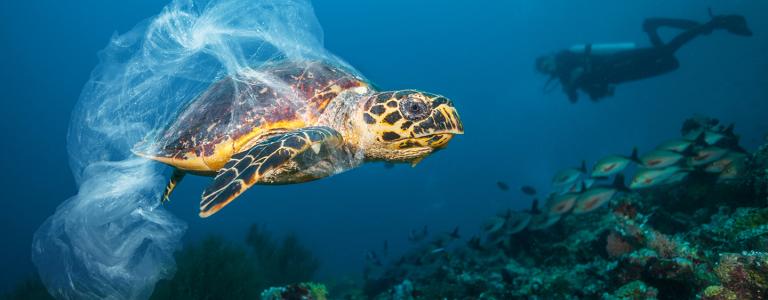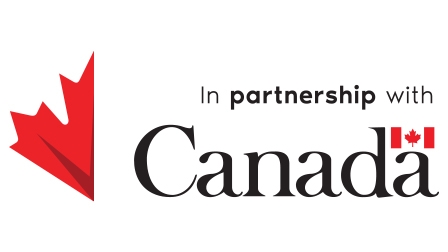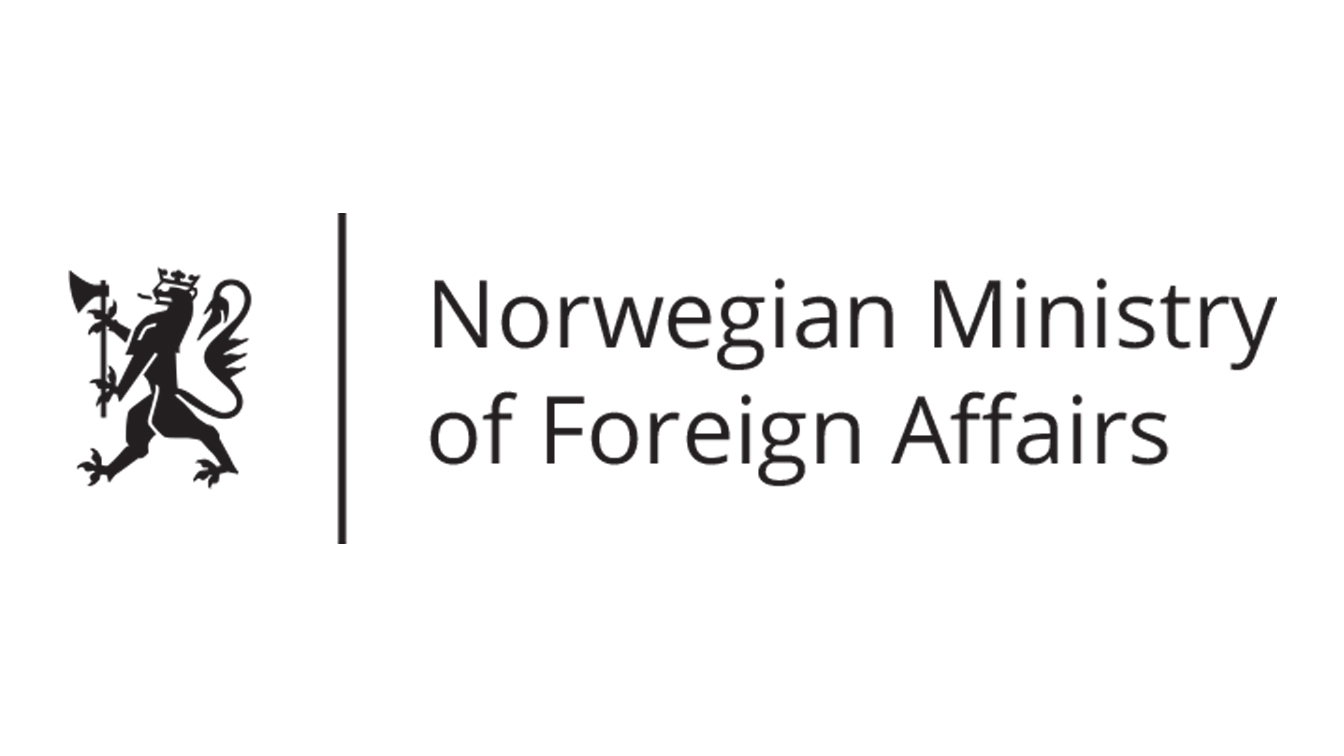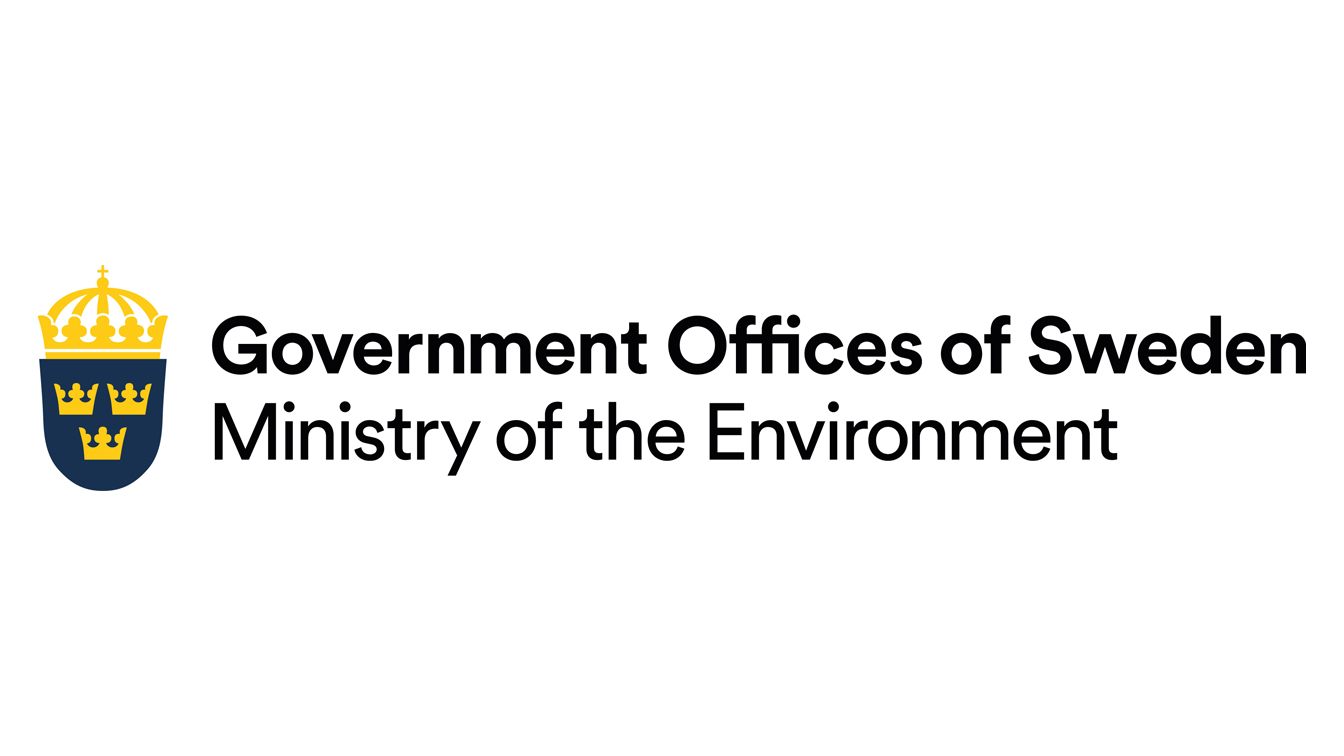Protecting the Marine Environment from Land-based Activities
Still Only One Earth: Lessons from 50 years of UN sustainable development policy
Despite efforts, marine and coastal pollution from land-based sources increases. The experience of the Global Programme of Action for the Protection of the Marine Environment from Land-Based Activities shows the double-edged nature of multi-stakeholder partnerships: they can increase the effectiveness of action, but also inhibit action due to self-interest. (Download PDF) (See all policy briefs) (Subscribe to ENB)
When Norwegian explorer Thor Heyerdahl launched a voyage across the Pacific Ocean by raft in 1947, the world’s oceans seemed vast and limitless. Just 25 years later—the blink of an eye in human history—the world’s first global environment conference in Stockholm urgently flagged the damage people were causing to the seas through marine pollution.
In the years that followed, the human footprint on oceans became ever more evident. In 1997, a racing boat captain discovered the Great Pacific Garbage Patch in the North Pacific—a swirling, 1.6 million-square-kilometre collection of marine debris trapped by ocean currents. “Red tides” appeared off coastal areas, caused by overgrowth of algae that can be toxic to sea life and humans. Photographs of marine animals trapped or killed by people’s trash began appearing in the media: dead whales, their bellies containing kilos of plastic waste; a seabird’s rotted carcass, framing the ring pulls and bottle caps it once ate; a sea turtle with a straw up its nose.
In 1995, the international community took the first step in a global response to this crisis by adopting the Global Programme of Action for the Protection of the Marine Environment from Land-Based Activities (GPA).
Yet, 25 years later, marine pollution continues unabated.
Land-based Sources of Marine Pollution
80% of marine pollution comes from land (Vanderzwaag and Powers, 2008). Pollution sources include untreated sewage, agricultural run-off, oils and heavy metals from industry, and sediment washed in from earthworks and logging.
Coastal areas are especially sensitive. Coral reefs, mangroves, seagrass meadows, salt marshes, and tidal flats are complex ecosystems that support food production and livelihoods. Fishers, tourism operators, and many other workers depend on coastal resources for their livelihoods.
[O]ver the intervening decades of my life, a quickening cycle of decline has been brought upon the health of the Ocean by the ever-accumulating effects of harmful human activities.
Oceans and coasts provide important ecosystem services: regulating climate, maintaining the food web, and enabling maritime transport. The value of marine ecosystem services is about USD 2.5 trillion each year, which would make it the world’s seventh-largest economy (GEF, 2018). Degradation of coastal and marine environments is estimated to cost USD 350-940 billion annually in fisheries decline, storm damage in coastal areas, loss of tourism revenue, and other impacts (GEF, 2018).
Early International Action
The Plan of Action adopted at the 1972 Stockholm Conference on the Human Environment, devoted nine of its 109 paragraphs to marine issues, noting preparations for a conference on the Law of the Sea the following year. The UN Environment Programme (UNEP), itself a creation of the Stockholm Conference, launched a Regional Seas Programme in 1974 to support cooperation for clean and healthy seas. Today, more than 143 countries have joined 18 Regional Seas Conventions and Action Plans for the sustainable management and use of the marine and coastal environment.
At the 1992 Earth Summit in Rio de Janeiro, Brazil, countries adopted Agenda 21 as a blueprint for local action for sustainable development. Chapter 17 of Agenda 21 contained measures for preventing degradation of the marine environment from land-based activities. This, along with the provisions of the UN Convention on Law of the Sea (UNCLOS), set the framework for the GPA (UNEP, 2018).
What is the GPA?
The GPA was adopted by 108 countries and the European Commission in 1995 in Washington, DC. The GPA is not a legally binding agreement. Rather, it is a programme housed at UNEP that supports countries to make their own plans to curb land-based pollution of the marine environment. Countries are encouraged to undertake regional cooperation on issues such as harmonization of pollutant discharge standards and joint protection of coastal habitats, working through the regional seas conventions. Over time, the GPA simplified its focus to three main areas: sewage, nutrient management, and marine litter (Kimball, 1995; Vanderzwaag and Powers, 2008; UNEP, 2018).
Countries reviewed progress on the GPA at four intergovernmental review conferences (IGRs) in Montreal in 2001, Beijing in 2006, Manila in 2012, and Bali in 2018. The first IGR found countries were slow to develop national plans of action, partly because many developing countries needed technical assistance to do so. With financing from the Global Environment Facility (GEF), the pace picked up. At IGR-2, governments agreed on a programme of work to support three global partnerships on marine litter, nutrient management, and wastewater (Beintema et al., 2006).
IGR-3 chose to further develop the GPA’s partnership approach to problem solving rather than adopting targets on nutrient management as some had hoped (Benson et al., 2012). IGR-4 pledged to strengthen the three global partnerships initiated at IGR-2. The meeting also requested UNEP analyze options and alternatives for the future of the GPA and its mandate (UNEP, 2019).
The Global Programme of Action for the Protection of the Marine Environment from Land-Based Activities:
- identifies nine source categories of marine and coastal pollution: sewage, persistent organic pollutants (POPs), radioactive substances, heavy metals, oils (hydrocarbons), nutrients, sediment mobilization, litter, and physical alteration and destruction of habitat
- proposes a logical sequence of problem assessment, priority setting, management strategies, evaluation, and financing to address these pollution sources
- establishes a clearinghouse mechanism to improve access to information and expertise on each of the source categories
Global Partnerships
In January 2019, UNEP and the GPA launched a five-year project to coordinate action around wastewater pollution, nutrient management, and marine litter. The launch highlighted the GPA’s global partnerships in each area. Governments at the UN Environment Assembly later that year agreed activities in each of these three areas should become part of UNEP’s regular programme of work.
Nutrient management: Fertilizers containing nitrogen and phosphorus are used in farms and gardens. Burning of fossil fuels, aquaculture, and some industrial activities also produce such nutrients. When nutrients wash into waterways and coastal environments, they can cause excessive growth of algae, block sunlight, and use up dissolved oxygen, ultimately causing “dead zones” with no aquatic life. Half the world depends on nitrogen and phosphorous fertilizers for farming. Use of synthetic nitrogen fertilizer increased seven times between 1960 and 1990, and phosphorus use more than tripled. Excess nutrients leach into groundwater and coastal waters: the UN estimates around 120 million tonnes of nitrogen and 10 million tonnes of phosphorous are released into the environment every year (UNEP, 2020).
In 2009, the GPA and its partners, including governments, the Food and Agricultural Organization of the UN (FAO), and industry and civil society groups such as the Federation of Free Farmers and the International Fertilizer Industry Association, launched the Global Partnership on Nutrient Management. The partnership brought the issue of nutrient management to global attention. It promotes effective nutrient management to limit the negative impacts of nutrients on the environment and human health. The partnership’s work included development of resources for farmers and agriculture advisors, training, demonstration projects, and roundtables for discussion and validation of good practices (UNEP, 2018).
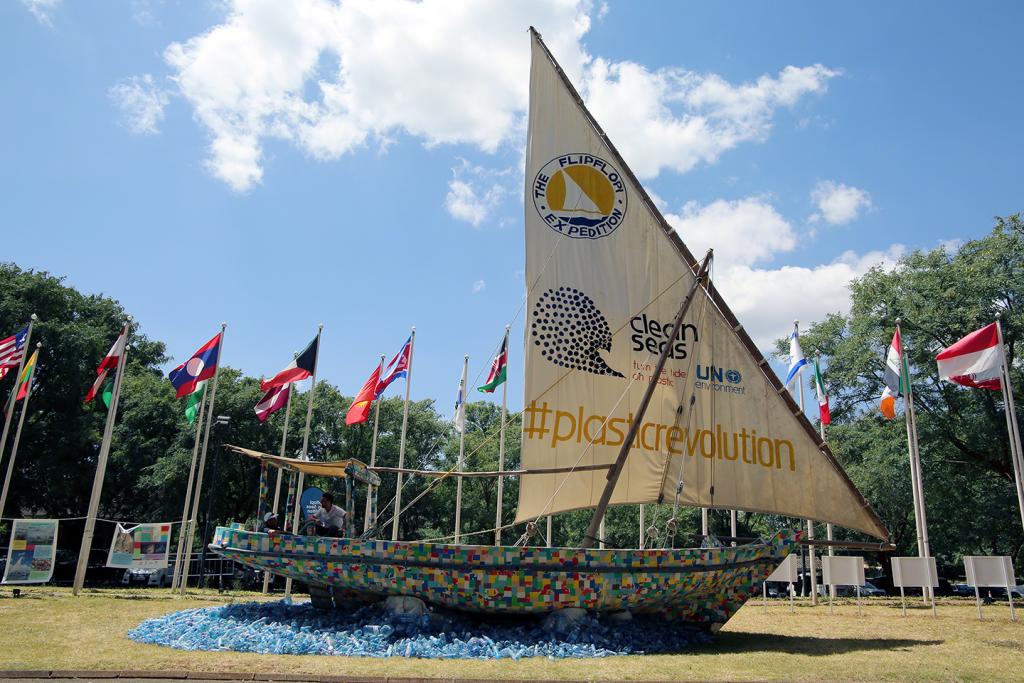
Marine litter: Plastics make up an estimated 60 to 90% of marine litter. Some of it comes from consumer packaging, including bottles, food containers, straws, and cling wrap. Plastics persist in the environment for hundreds of years and break down into microplastics that find their way into the food chain. Lost or discarded fishing gear, clothing made from synthetic fabrics like polyester, lycra, and nylon, and the wear-and-tear from synthetic tires contribute to the growing “plastic soup” in marine environments (Dauvergne, 2018).
Despite increased public awareness, scientists predict the amount of plastic making its way into the oceans is set to double between 2010 and 2025. Meanwhile, avoidance of plastic packaging has been viewed more as a consumer choice than a responsibility of manufacturers or a regulatory responsibility of governments (Dauvergne, 2018). Extended producer responsibility (EPR) schemes, where they exist, do not cover all plastics, and are far from being global in scope. EPR schemes and related measures such as deposit return schemes, environmental taxes, and “pay as you throw” programmes could help curb the flood of plastic waste (Raubenheimer and Urho, 2020).
Eight million tonnes of plastic end up in our oceans every year. It is polluting our seas, killing marine life, destroying ecosystems, ruining livelihoods, harming our economies, and damaging human health.
The GPA launched the Global Partnership on Marine Litter at the UN Conference on Sustainable Development (Rio+20) in 2012. Like other GPA partnerships, it is a multi-stakeholder group comprised of governments, international organizations, civil society groups, industry, and academia. The partnership supports countries in developing action plans, coordinating available funds, and conducting awareness activities.
UNEP also launched the Clean Seas campaign in February 2017, which has garnered commitments from 60 countries for actions such as establishing national recycling facilities and reducing the use of single-use plastics.
Wastewater management: Sewage is the largest source of contamination by volume of the marine and coastal environment (Islam and Tanaka, 2004). Population growth and urbanization in coastal areas have led to dramatic increases in sewage discharge. The resulting impacts include the spread of waterborne diseases, degradation of fisheries, loss of recreational amenities, and loss of livelihoods.
The Global Wastewater Initiative is the third GPA multi-stakeholder platform for action. The initiative, launched in 2013, conducts economic valuation studies on the environmental costs and benefits of nutrient management and has published guidance and good practices for regulating wastewater management. For example, using wastewater for irrigation allows both water and the nutrients in it to be used for crop production, avoiding fertilizer use. Wastewater sludge can be used to generate biogas and manufacture construction materials.
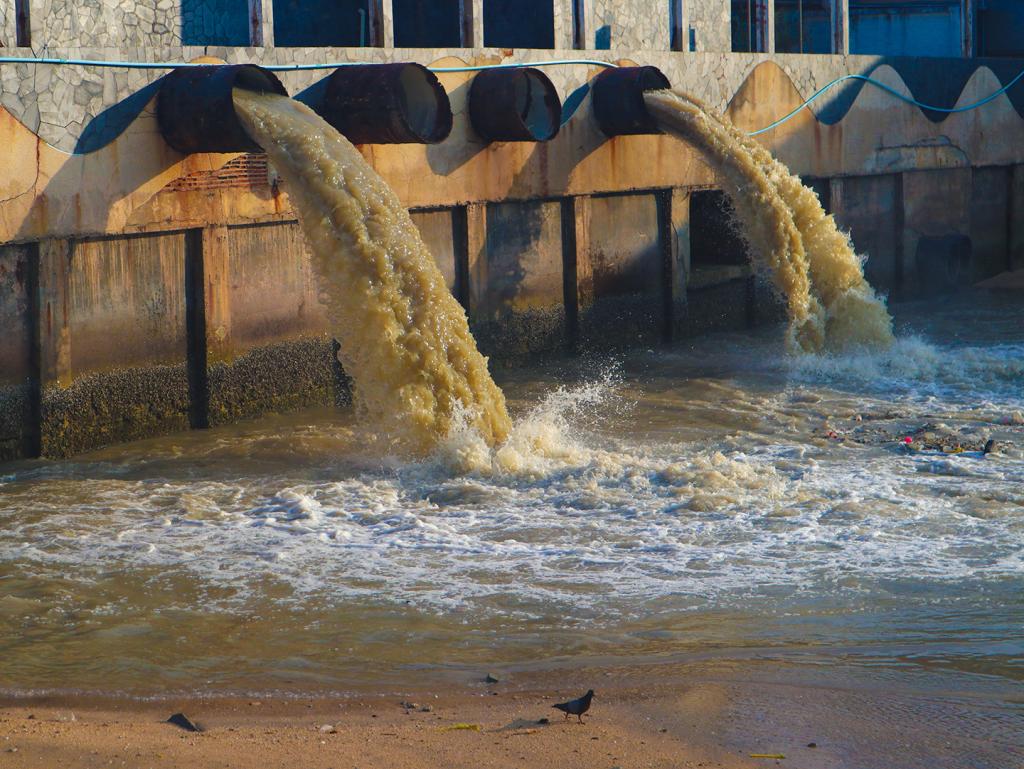
The initiative supports the development of wastewater strategies, guidelines, and monitoring practices in many developing countries. It also supports demonstration projects in several regions, including the Black Sea, the Red Sea and the Gulf of Aden, and Tanzania. Projects address agricultural production, construction of decentralized wastewater treatment systems, and inclusion of women and girls in water and sanitation activities. Pilot projects such as a Waste Stock Exchange Management System in Ghana have helped popularize the idea of “one person’s waste, another person’s raw material” and diverted pollutants away from the marine environment. In Benin, Ethiopia, Ghana, and Morocco, demonstration projects helped reverse desertification by using treated wastewater to reforest and restore degraded wetlands (UNEP, 2018).
The Future for Action on Land-based Sources of Marine Pollution
Despite these efforts, marine and coastal pollution from land-based sources not only continues unabated, but it has greatly increased. By 2006, the GPA’s State of the Marine Environment report noted progress had been made on POPs (pesticides), radioactive substances, and oils, but action to stem pollution from heavy metals, nutrients, and sediment was only partially successful, and pollution from sewage, marine litter, and the physical alteration and destruction of habitats had worsened. The GEF International Waters strategy 2014-18 noted more than 80% of wastewater collected and discharged globally was not being treated. The discharge of nutrients and pollutants into marine environments has increased, resulting in more than 500 identified “dead zones” in the world’s oceans (UNEP, 2018).
Developing countries in particular face challenges of rapid urbanization, population growth, weak regulatory environments, and the high cost of infrastructure needed to adequately treat or recycle waste (Islam and Tanaka, 2004). Waste shipments from richer to poorer nations further complicate issues and deflect accountability for dealing with some of the prime sources of pollution (Dauvergne, 2018). For developing countries, modern sewage treatment infrastructure is a priority, but the Global Wastewater Initiative was the last of the three partnerships and only launched in 2013.
With insufficient funding available for developing countries, some governments may lack interest in the GPA. Not all countries were part of the initial group that adopted the GPA in 1995 and only half of all UN Member States have participated in the review conferences (Meier-Wehren, 2013). The GEF, under its International Waters programme, has provided financing of over USD 2 billion, supporting more than 300 projects around the world. While this money helped unlock matching funds from other donors and investors, it is not able to meet the magnitude of the challenge (UNEP, 2018).
Governance of land-based sources of marine pollution has relied heavily on industry self-regulation and consumer action. Business and citizen responses have resulted in bottom-up, informal governance that only targets specific sub-categories of pollution. In marine plastics pollution, for example, single-use plastic bags, plastic straws, and microbead products have been the focus of attention.
Land-based sources of marine pollution are a large-scale and complex set of problems that no overarching regulatory or programmatic approach can adequately address. Global governance responses have become more specialized over time, focusing on specific pollutants, such as the Stockholm Convention on POPs and the Minamata Convention on mercury. On the issue of marine plastics, there are calls now for a legally binding global treaty that would place greater responsibility on governments and industry (Raubenheimer and Urho, 2020). These changes in the policy architecture have decreased the GPA’s relevance and have likely reduced the effectiveness of the GPA as a global programme, as energy and donor interest flows to these new instruments.
Nevertheless, as a programme for international cooperation and support of national actions, the GPA has sparked change. By 2018, 107 countries had relevant policy frameworks in place (UNEP, 2018). The GPA has increased knowledge about land-based sources of marine pollution through conducting scientific assessments and publishing guidance for countries.
The GPA played an agenda-setting role ahead of Rio+20 in 2012, and the subsequent negotiation of the Sustainable Development Goals (SDGs), which includes a target on preventing and reducing land-based sources of marine pollution (target 14.1). The GPA has also contributed to the implementation of regional conventions, policies, and action plans in practical ways. After the 2004 Indian Ocean tsunami, for example, the GPA Coordination Office developed 12 guiding principles for countries undertaking environmentally sound coastal rehabilitation (UNEP, 2018).
Prior to the GPA’s adoption in 1995, governance of marine pollution was primarily through area-based conventions and planning. The GPA established the need for source-based action. This resulted in the regional conventions taking a stricter and more comprehensive approach to the broad scope of issues in marine pollution (UNEP, 2018).
Momentum around various oceans-related intergovernmental processes continues to gather pace. The 2017 UN Ocean Conference called for significantly reducing marine pollution of all kinds. The outcome document also called for promoting waste prevention and minimization, developing sustainable consumption and production patterns, and adopting the 3Rs approach. The United Nations Environment Assembly (UNEA) may consider opening negotiations on a convention to combat marine litter and microplastics. UNEA may also decide to no longer convene intergovernmental reviews of the GPA, bringing to a close this ambitious and wide-ranging programme, while continuing work on its key areas of focus.
Lessons from the GPA
The GPA has shown the value of the foundational work of problem assessment, issue framing, and coalition building, before rules and targets can be adopted. Through its demonstration projects, the GPA created space for practical action and experimentation, and coordinated the work on the ground. Its partnership approach enabled collaboration across international, national and subnational levels, essential to sharing of information, coordinating efforts, and producing knowledge (Ahlström and Cornell, 2018). Its focus on partnerships has resulted in coalitions for action, whose work continues.
The experience of the GPA highlights the double-edged nature of multi-stakeholder partnerships: they can increase the effectiveness of action, but also inhibit action due to self-interest. While the involvement of the private sector is essential for effective action on issues such as fertilizer use, it may also have limited action in areas such as marine plastics.
Oceans are no longer a limitless source of food, teeming with life. Nor are they bottomless trash bins. In 2010, a National Geographic team successfully built and sailed a catamaran made from plastic bottles across the Pacific, dubbed the Plastiki as an homage to Heyerdahl, and used it as a call for action. Our lives depend on the oceans. As long as there are land-based sources of marine pollution, the international community will have to rise to the challenge.
Works Consulted
Ahlström, H. & Cornell, S. (2018). Governance, polycentricity and the global nitrogen and phosphorus cycles. Environmental Science & Policy, 79, 54-65, DOI: 10.1016/j.envsci.2017.10.005
Beintema, N., et al. (2006). Summary Report of the Second Intergovernmental Review Meeting of the Global Programme of Action for the Protection of the Marine Environment from Land-Based Activities: 16–20 October 2006. Earth Negotiations Bulletin. https://enb.iisd.org/vol25/enb2537e.html
Benson, C., et al. (2012). Summary report of the Third Intergovernmental Review Meeting of the Global Programme of Action for the Protection of the Marine Environment from Land-based Activities: 25-26 January 2012. Earth Negotiations Bulletin. https://enb.iisd.org/vol25/enb2577e.html
Dauvergne, P. (2018). Why is the global governance of plastic failing the oceans? Global Environmental Change, 51, 22-31. DOI: 10.1016/j.gloenvcha.2018.05.002
Islam, M. & Tanaka, M. (2004). Impacts of pollution on coastal and marine ecosystems including coastal and marine fisheries and approach for management: A review and synthesis. Marine Pollution Bulletin, 48(7–8), 624-649. DOI: 10.1016/j. marpolbul.2003.12.004
Kimball, L. (1995). An international regime for managing land-based activities that degrade marine and coastal environments. Ocean & Coastal Management, 29(1–3), 187-206. DOI: 10.1016/0964-5691(96)00006-3
Meier-Wehren, B. (2013) The Global Programme of Action for the Protection of the Marine Environment from Land-Based Activities. New Zealand Journal of Environmental Law, 17, 1–40.
National Geographic. (2020). Great Pacific Garbage Patch. https://www.nationalgeographic.org/encyclopedia/great-pacific-garbage-patch/
Raubenheimer, K. & Urho, N. (2020). Rethinking global governance of plastics – The role of industry. Marine Policy, 113, 103802. DOI: 10.1016/j. marpol.2019.103802
Sustainable Development Goals Partnerships Platform. (2020). Global Wastewater Initiative https://sustainabledevelopment.un.org/partnership/?p=12300
UNEP. (2018). The Global Programme of Action for the Protection of the Marine Environment from Land-Based Activities: A 20-year Perspective on a Unique Programme to Advance the Ocean Agenda. UNEP/GPA/IGR.4/INF/3.
UNEP. (2019). Bali Declaration on the Protection of the Marine Environment from Land-based Activities. UNEP/GPA/IGR.4/6. https://undocs.org/UNEP/GPA/IGR.4/6
UNEP. (2020). Nutrient management: the issue. https://www.unenvironment.org/explore-topics/oceans-seas/what-we-do/addressing-land-based-pollution/global-partnership-nutrient-0
UNEP GPA. (2010). Building the Foundations for Sustainable Nutrient Management. https://www.ais.unwater.org/ais/pluginfile.php/225/mod_label/intro/Building_the_ foundations-2.pdf
UNEP/GEF. (2018). From Source to Sea: Protecting Our Oceans through Partnership and Investments. UNEP/GPA/IGR.4/INF/5.
VanderZwaag, D. & Powers, A. (2008). The Protection of the Marine Environment from Land-Based Pollution and Activities: Gauging the Tides of Global and Regional Governance. The International Journal of Marine and Coastal Law, 23(3), 423-452. DOI: 10.1163/092735208X331872
You might also be interested in
A Warming Arctic is a Warning for the World
To protect the Arctic, stronger and broader local, national, and international measures to reduce greenhouse gas emissions must be implemented.
The Water and Sanitation Challenge
For universal access to water to become a reality, governments and private-sector service providers should adopt a human rights-based approach to ensure water and sanitation services are safe, available, accessible, affordable, and culturally acceptable.
The Rising Pressures on Ocean Governance
The ocean is under serious threat. Stressors include overfishing, marine pollution, habitat destruction, and acidification.
National State of the Environment Report: Uzbekistan
The National State of the Environment Report (NSoER) is a comprehensive document that provides a snapshot of current environmental trends in Uzbekistan's socio-economic development for citizens, experts, and policy-makers in the country of Uzbekistan.
